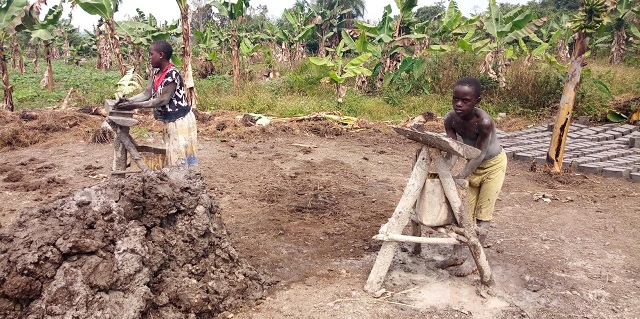
Kampala, Uganda | THE INDEPENDENT | The COVID-19 induced lockdown has become a turning point for Madrine Namulema, a former market vendor who has since rediscovered her potential for making reasonable earnings from hard labour.
Namulema, a mother of four, has found a fortune in making clay bricks as an alternative to an average market stall business she was operating in Kibuye market for a period of six years.
When the country was put under a lockdown in March 2020 as one of the interventions to avert the further spread of COVID-19, Namulema says her market business suffered reversals after she diverted the biggest percentage of the working capital to feeding the family. Faced with serious financial hardships, and coupled with a ban on public transport means, Namulema sneaked out of Kampala on a cargo truck and eventually returned to Butenzi village in Buwunga sub-county, Masaka district. Here, she hoped to find an alternative way of living she could afford.
Namulema joined a local association of clay brick-layers in the area and gradually, she also introduced her four children aged between seven to 13 years to the same work. She says they have earned reasonable income for a period of over one year.
Despite brick-laying being a form of hard labour which is largely embraced by men, Namulema indicates it has become part of her life from which she does not intend to quit any time soon.
On average, Namulema indicates that they can collectively produce 1500 bricks daily, with each sold at shillings 190 to brokers who eventually sell to the final users.
She adds that besides earning them an income as a family, the venture also helps her to keep the children fully occupied throughout the day hence reducing chances of involving themselves in risky behaviour.
She adds: “I have also learnt that I can hire other casual laborers to this work and I play the supervisory role.”
Doreen Nabunje, aged 13, who was a student in senior one before the schools closure, indicates that the project has taught them hard work which she is now used to.
Besides supporting their mothers’ efforts of raising school fees and costs of maintaining the home, Nabunje adds they also share part of the proceeds, which motivates them to continue with the work.
Christopher Lubega, an 11-year-old pupil in primary five says that they were left with no alternative but to join their mother after she undertook bricklaying as a source of living.
The national and international labour laws provide strong safeguards for children against being used in any form of labour that is not befitting of their age.
But Namulema argues that she ensures that the children do not stretch beyond their capacities. She indicates that the available circumstances require all family members to be engaged in any form of income-generating activity.
*****
URN
 The Independent Uganda: You get the Truth we Pay the Price
The Independent Uganda: You get the Truth we Pay the Price



